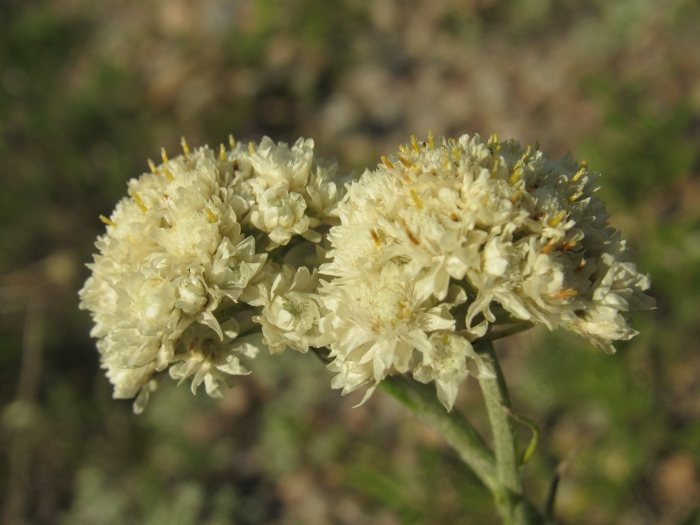Pearly Pussytoes
(Antennaria anaphaloides)
Pearly Pussytoes (Antennaria anaphaloides)
/
/

© Anders Hastings
CC BY 4.0
Image By:
© Anders Hastings
Recorded By:
Copyright:
CC BY 4.0
Copyright Notice:
Photo by: © Anders Hastings | License Type: CC BY 4.0 | License URL: http://creativecommons.org/licenses/by/4.0/ | Uploader: andershastings | Publisher: iNaturalist |

























Estimated Native Range
Summary
Antennaria anaphaloides, commonly known as Pearly Pussytoes, is a perennial herb native to a variety of habitats including alpine and subalpine areas, dry meadows, and rocky slopes in western Canada and the western United States, particularly throughout the Rocky Mountains, Great Basin, and the northeastern Colorado Plateau. It typically forms a low-growing mat reaching up to 12 inches in height, with a spread that can be quite extensive, creating a dense ground cover. The leaves are silvery-green, and the plant is known for its clusters of small, fuzzy, white to pinkish flowers that resemble cat’s paws, blooming from late spring to early summer. The flowers are not particularly showy but do attract pollinators such as butterflies.
Pearly Pussytoes is valued for its drought tolerance and ability to thrive in poor, well-drained soils, making it an excellent choice for rock gardens, xeriscaping, and as a ground cover in dry, sunny areas. It is also used for erosion control on slopes. This plant prefers full sun but can tolerate light shade and requires minimal maintenance once established. While generally disease-free, it can occasionally suffer from root rot if grown in poorly drained soils. Pearly Pussytoes is not known for aggressive roots or significant pest problems. It is also deer resistant, adding to its appeal for gardeners dealing with wildlife pressure.CC BY-SA 4.0
Pearly Pussytoes is valued for its drought tolerance and ability to thrive in poor, well-drained soils, making it an excellent choice for rock gardens, xeriscaping, and as a ground cover in dry, sunny areas. It is also used for erosion control on slopes. This plant prefers full sun but can tolerate light shade and requires minimal maintenance once established. While generally disease-free, it can occasionally suffer from root rot if grown in poorly drained soils. Pearly Pussytoes is not known for aggressive roots or significant pest problems. It is also deer resistant, adding to its appeal for gardeners dealing with wildlife pressure.CC BY-SA 4.0
Plant Description
- Plant Type: Herb
- Height: 0.7-2 feet
- Width: 1-1.6 feet
- Growth Rate: Moderate
- Flower Color: White, Brown
- Flowering Season: Spring, Summer
- Leaf Retention: Deciduous
Growth Requirements
- Sun: Full Sun, Part Shade
- Water: Medium
- Drainage: Medium
Common Uses
Groundcover, Low Maintenance, Rock Garden
Natural Habitat
Native to alpine and subalpine areas, dry meadows, and rocky slopes in western Canada and the western United States
Other Names
Common Names: Woolly Pussytoes, Pearly Pussytoes, Handsome Pussytoes, Pussytoes, Tall Everlasting, Tall Pussytoes, Many-flowered Everlasting
Scientific Names: , Antennaria anaphaloides, Antennaria anaphaloides f. anaphaloides, Antennaria anaphaloides f. straminea, Antennaria anaphaloides var. anaphaloides, Antennaria anaphaloides var. straminea, Antennaria pulcherrima subsp. anaphaloides, Antennaria pulcherrima var. anaphaloides,
GBIF Accepted Name: